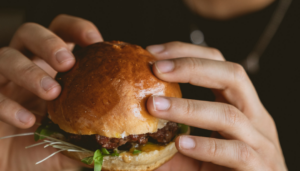As the market started transitioning from artificial to natural colors, carmine and carmine/paprika blends became the go-to solutions for red baked goods – like the classic red velvet cake – since they offered bright red, heat stable alternatives to Allura Red and Red #40.
But since carmine is derived from insects, that means it’s not suitable for kosher products. This leaves a constant challenge for product developers looking to find a suitable natural red that will withstand the rigors of baking. We’ll take you through some of the kosher bake stable red options currently available.
The Trouble with Temperature
The industrial baking process used to make the cakes seen on the supermarket shelves varies by company, ingredients, taste, texture, and shelf life. But the one thing that is fairly consistent is the high temperature and long bake time – generally between 160-170°C (325-350°F) for 40 minutes with a cooling time of up to 4 hours. Under these conditions, it can be difficult to get the right red shade for cakes, breads, or biscuits/cookies.
So what kosher reds are available?
1. Red Beet
Red beet is generally the first go-to alternative to carmine and is available in a concentrated powder or liquid form. But its use is limited by the heat stability of the betanin molecule responsible for its red colour. You can see in the cupcakes below, the pink shows nicely on top, but in the center the color has almost completely faded during baking. Some bakery applications, like wafer biscuits, meringues, and macarons lend themselves well to beet because the heating process is relatively fast and the nature of the individual piece is small enough that the heat dissipates rapidly. You may still need to overdose a bit to ensure a vibrant shade after baking.
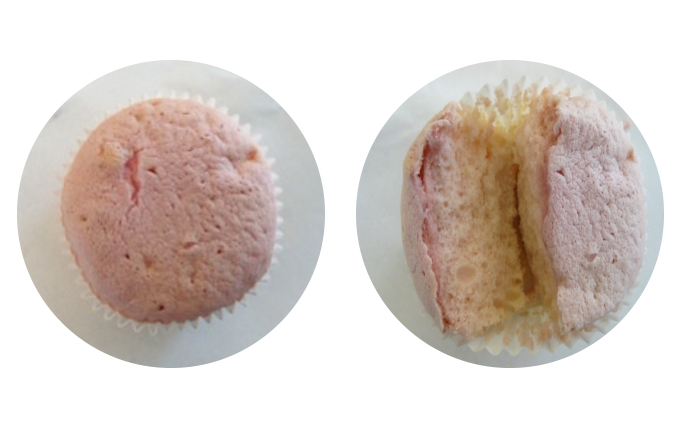
2. Anthocyanins
Another option is anthocyanins, which include those sourced from purple corn, purple carrots, elderberry, purple sweet potato, and red radish. They show a variety of red shades depending on the source material – from the bright red colour of radish to a more pink/purple shade from purple sweet potato.
To deliver vibrant pink to red shades, however, anthocyanins generally require an acidic food system around pH 3 – 4.5, whereas baked goods generally have a neutral or slightly alkali pH. As the application becomes more alkali and the red shade moves towards a more purple color the stability of the pigment decreases. In the image below, you can see purple sweet potato appears bright pink in an acidified cupcake base (front) but shifts toward purple in a typical cupcake base (back).
There are market examples of purple cakes successfully using anthocyanins, but these tend to be smaller cake bar products which allow a more rapid cooling. That’s why these colors are best used in the fruit preps and fillings of baked goods rather than the batter or dough.
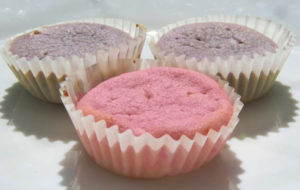
3. Lycopene
Lycopene is a carotenoid pigment that gives tomato skins their vibrant orange red colour. Unlike beetroot, lycopene has excellent heat stability and unlike anthocyanins it does not show a pH driven shade impact.
Where an application has a combination of heat and fat and oil, however, the shade can shift from red to orange. You can see this occur in real-time by looking through a clear oven door as your application bakes – the pink batter turns orange as the lycopene-colored cake cooks through.
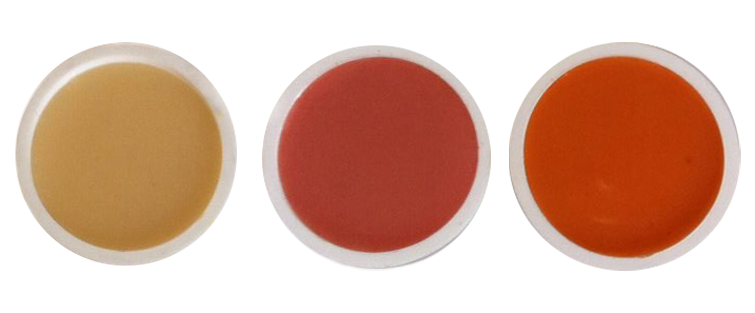
Lycopene is, however, often used in decorations and coatings on cakes where the neutral pH of the sugar base would preclude anthocyanins if a kosher red were required.
4. Red Iron Oxide
Iron oxides are available in a range of hues including yellows, reds & blacks and often blended off into a range of brown shades. Red iron oxide is a very stable, kosher red color with no impact of pH on the shade delivery. The downside with this color is that compared to other natural red color options it shows a more muted brick red color in baked applications as opposed to a vibrant red, making it a less popular choice for cakes. You can see in the image below that it can help impart a red shade to standard chocolate cakes for red velvet flavors, but is not the vibrant red that synthetics can achieve.
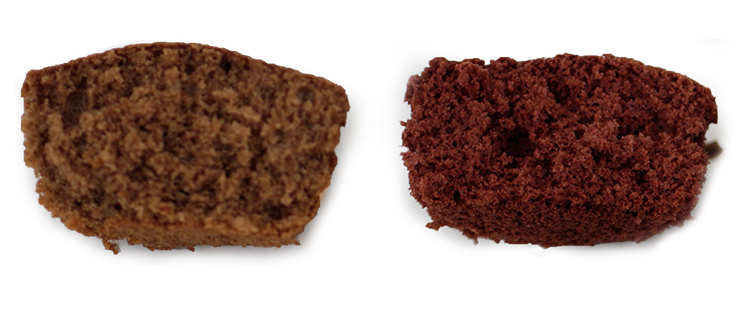
What's the best option?
We find that a blend of the above colors is usually the best option. This allows us to get the best hue, stability, and cost in use for your application. For example, while beet may fade a bit while baking, if we blend it with paprika or beta-carotene, which are more heat stable, the color loss is less noticeable than when using beet alone, as seen in the cupcakes with our Imperial Red blend below.
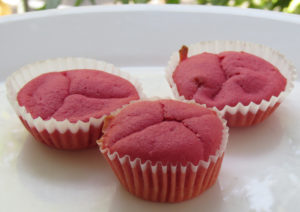
Kosher bake stable red colors present a challenge but the technical hurdles for each of the alternatives to carmine are known and understood. With this knowledge in hand combined with selecting the best color or color blend for your recipe and process, there is the best chance for a successful baked product colored with a kosher natural red color. Contact us to collaborate on your next project, or get started with a bakery sample kit.




